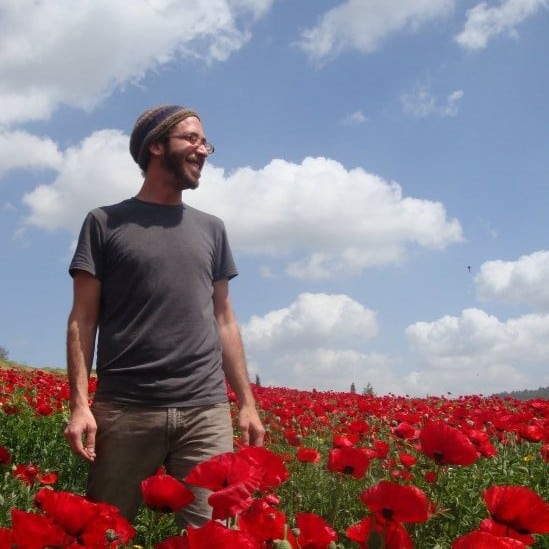by Yigal Deutscher
Many of us, even if we are Jewishly knowledgeable, know less about Shmita than we do about other Jewish traditions. Today, Shmita does not define Jewishness like other popular rituals or time-based traditions, such as Shabbat, Yom Kippur, or Passover. Within Jewish education and community, our teachers, parents and Rabbis do not necessarily bring up Shmita, and, when this tradition is recalled, it is usually referred to as an archaic notion or simply brought up as romantic idealism. Shmita, to a certain extent, has become a ‘lost’ piece of the Jewish worldview.
Traditionally, Shmita applied in the land of Israel alone. So for over 2,000 years, since the time the Jewish people were separated from the land of their origins, Jewish faith and culture developed separately from the necessity to observe and practice Shmita. During this time, the vision of Shmita faded deeper and deeper into the background of our collective Jewish subconscious. There was no primary need for Jewish communities to wrestle with this tradition, as they had to do for other parts of our culture & faith, in determining what rituals like Shabbat, Kashrut, and holiday observance meant for modern, changing times. It has been many generations, many cycles of sevens, since we can collectively say we have celebrated this tradition, with its true intention and cultural significance.
However, something has shifted in the global Jewish community, and now, more than perhaps ever before in a modern era, there are a few things stirring about that is changing our relationship to, and perception of, Shmita. Curiosity is rising; conversations are deepening; and excitement is growing. Shmita is becoming relevant again. So, why now? What is finally bringing the vision of Shmita towards the forefront of our collective consciousness?
- Since the resumption of Jewish agricultural life in Israel, which has developed enormously since 1948, Shmita is no longer an abstract ideal or a romantic notion. It is a very real part of the religious, agricultural, and economic reality in Israel today, and one that is simultaneously both very exciting and very challenging. Each time the Shmita Year arrives on the Israeli calendar, the debate of what to do with this fallow-year tradition is something that is becoming increasingly harder and harder to ignore. Along with Shmita comes rising tensions around land use, economic production, import/export food markets, the religious/secular divide, and more. Shmita has a special way of hitting on many of Israel’s sensitive spots all at once. While for many years, rabbinic ordinances such as Heter Mechira allowed for a more ‘symbolic’ observance of Shmita, there is now a renewed interest in approaching this tradition with new eyes, with a willingness to meet this tradition in new creative cultural ways, which includes facing the many challenges inherent within Shmita.
- The environmental degradation, economic instability, and loss of community culture that we are globally experiencing make it critically important to reevaluate our cultural practices and norms, to really strive for sustainability and resiliency for the sake of future generations. The values inherent in the Shmita tradition challenge a contemporary world striving for continual economic growth, development, and individual gains, which more often than not come with a loss to long-term ecological and social integrity. Shmita offers an old/new context in which to turn to the Torah for guidance, to learn timeless values for the real issues we face today. Perhaps there is a message embedded within Shmita that we can use right now to strengthen the movement for creating a healthier, more holistic and sustainable culture. Over the last twenty years, the Jewish social justice and environmental movements, in particular, have grown and matured enormously, and now are ready to see Shmita in a new light, ripe with guidance for this particular era.
- The Jewish world is now more linked, and more diverse, than ever before; and there is an incredible opportunity for new areas of shared conversation across boundaries and differences. The question of Jewish culture, identity, and peoplehood is one that must be addressed, with new creative and adaptive thinking. Shmita offers a platform that touches upon many of the diverse questions and tensions with this wider context. Rooted in a wide-spectrum of ideas around land, food, economics, community, spirituality and so much more, Shmita can now be approached as a lens in which to further explore relationships between religious and secular Jewish communities; Israeli and Diaspora Jewish communities; Jewish and non-Jewish communities. We can see Shmita as a much needed laboratory for further evolving Jewish identity and culture today.
So the time has come to really enter into this conversation, for the first time in a very long time: What is this Shmita tradition? What might it mean for us today? In Israel and beyond? And not just for farmers, but for businesses, for families, for communities, for each of us individually? This is a learning journey for many of us; not just individually, but collectively. And in this way, we are all students, and we are all teachers. We all have something to offer this conversation. And we all have an opportunity to enter this experiment together, to help bring to life, once again, the values and vision of the Shmita tradition.
 Yigal Deutscher is an educator, farmer and permaculture designer. He has participated in the Adamah fellowship, and trained with the University of California, Santa Cruz (Center for Agroecology & Sustainable Food Systems), as well as with the Permaculture Research Institute in Australia. Until 2010, he was the farm manager and permaculture educator at the Chava v’Adam farm in Israel, where he also founded the Shorashim/Eco-Israel apprenticeship program. He is the founder of 7Seeds, an educational platform combining Jewish indigenous teachings & Permaculture Design strategies, as well as the manager of Hazon’s Shmita Project.
Yigal Deutscher is an educator, farmer and permaculture designer. He has participated in the Adamah fellowship, and trained with the University of California, Santa Cruz (Center for Agroecology & Sustainable Food Systems), as well as with the Permaculture Research Institute in Australia. Until 2010, he was the farm manager and permaculture educator at the Chava v’Adam farm in Israel, where he also founded the Shorashim/Eco-Israel apprenticeship program. He is the founder of 7Seeds, an educational platform combining Jewish indigenous teachings & Permaculture Design strategies, as well as the manager of Hazon’s Shmita Project.
